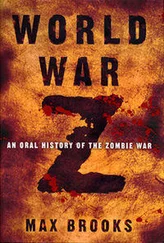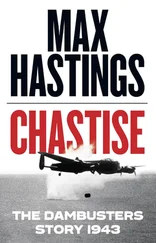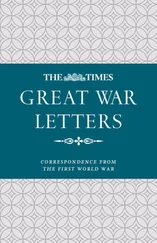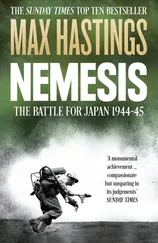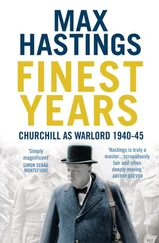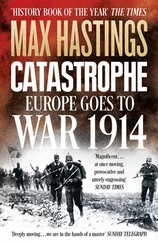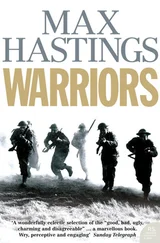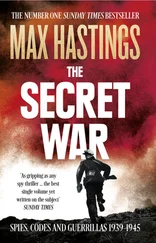If Stalin was not Hitler’s co-belligerent, Moscow’s deal with Berlin made him the co-beneficiary of Nazi aggression. From 23 August onwards, the world saw Germany and the Soviet Union acting in concert, twin faces of totalitarianism. Because of the manner in which the global struggle ended in 1945, with Russia in the Allied camp, some historians have accepted the post-war Soviet Union’s classification of itself as a neutral power until 1941. This is mistaken. Though Stalin feared Hitler and expected eventually to have to fight him, in 1939 he made a historic decision to acquiesce in German aggression, in return for Nazi support for Moscow’s own programme of territorial aggrandisement. Whatever excuses the Soviet leader later offered, and although his armies never fought in partnership with the Wehrmacht, the Nazi–Soviet Pact established a collaboration which persisted until Hitler revealed his true purposes in Operation Barbarossa.
The Moscow non-aggression agreement, together with the subsequent 28 September Treaty of Friendship, Cooperation and Demarcation, committed the world’s two principal tyrants to endorse each other’s ambitions and forswear mutual hostilities in favour of aggrandisement elsewhere. Stalin indulged Hitler’s expansionist policies in the west, and gave Germany important material aid – oil, corn and mineral products. The Nazis, however insincerely, conceded a free hand in the east to the Soviets, whose objectives included eastern Finland and the Baltic states in addition to a large share of Poland’s carcass.
Hitler intended the Second World War to start on 26 August, only three days after the Nazi–Soviet Pact was signed. On the 25th, however, while ordering mobilisation to continue, he postponed the invasion of Poland: he was shocked to discover both that Mussolini was unwilling immediately to fight beside him, and that diplomatic communications suggested Britain and France were serious about honouring their guarantees to Warsaw. Three million men, 400,000 horses and 200,000 vehicles, and 5,000 trains advanced towards the Polish frontier while a last flurry of futile exchanges took place between Berlin, London and Paris. At last, on 30 August, Hitler gave the attack order. At 2000 next evening, the curtain rose on the first, appropriately sordid, act of the conflict. Sturmbannführer Alfred Naujocks of the German Sicherheitsdienst (security service) led a party dressed in Polish uniforms, and including a dozen convicted criminals dismissively codenamed ‘Konserwen’ – ‘tin cans’ – in a mock assault on the German radio station at Gleiwitz in Upper Silesia. Shots were fired; Polish patriotic slogans were broadcast across the airwaves; then the ‘attackers’ withdrew. SS machine-gunners killed the ‘tin cans’, whose bloodstained corpses were arranged for display to foreign correspondents as evidence of Polish aggression.
At 0200 on 1 September, the Wehrmacht’s 1st Mounted Regiment was among scores roused in its bivouacs by a bugle call – some German units as well as many Polish ones rode horses to battle. The squadrons saddled, mounted, and began to move towards their start line alongside clattering columns of armour, trucks and guns. The order was given: ‘Muzzle caps off! Load! Safety catches on!’ At 0440, the big guns of the old German battleship Schleswig-Holstein, anchored in Danzig harbour for a ‘goodwill visit’, opened fire on the Polish fort at Westerplatte. An hour later, German soldiers tore down crossing poles on the western frontier, opening the way for leading elements of the invasion force to pour forward into Poland. One of its commanders, Gen. Heinz Guderian, soon found himself passing his family’s ancestral estate at Chelmno, where he had been born when it formed part of pre-Versailles Germany. Among his soldiers, twenty-three-year-old Lt. Wilhelm Pruller expressed the euphoria that suffused the army: ‘It’s a wonderful feeling now, to be a German…We’ve crossed the border. Deutschland, Deutschland über alles! The German Wehrmacht is marching! If we look back, or in front of us, or left or right, everywhere the motorised Wehrmacht!’
The Western Allies, heartened by knowledge that Poland boasted the fourth largest army in Europe, anticipated a struggle lasting some months. The defenders deployed 1.3 million men against 1.5 million Germans, with thirty-seven divisions on each side. But the Wehrmacht was far better equipped, having 3,600 armoured vehicles against 750 Polish, 1,929 modern planes against nine hundred obsolete ones. The Polish army had been progressively deploying since March, but had held back from full mobilisation in response to Anglo-French pleas to avoid provoking Hitler. Thus, on 1 September, the defenders were surprised. A Polish diplomat wrote of his people’s attitude: ‘They were united in the will to resist, but without any clear idea about the kind of resistance to be offered, apart from a lot of loose talk about volunteering as “human torpedoes”.’
Ephrahim Bleichman, a sixteen-year-old Jew living in Kamionka, was among thousands of local inhabitants summoned into the town square to be addressed by the mayor: ‘We sang a Polish hymn declaring that Poland was not yet lost, and another promising that no German would spit in our faces.’ Piotr Tarczy ski, a twenty-six-year-old factory clerk, had been ill for some weeks before he was mobilised. But when he informed the commanding officer of his artillery battery that he was ailing, the colonel responded with a brisk patriotic speech, ‘and told me he was sure that once I found myself in the saddle I would feel much better’. Equipment was so short that the regiment could not issue Tarczy ski with a personal weapon; he did, however, receive a regulation charger, a big horse named ‘Wojak’ – ‘Warrior’.
An air force instructor, Witold Urbanowitz, was conducting a mock dogfight with a pupil in the sky over D  blin when he was bewildered to see holes appearing in his plane’s wings. Landing hastily, he was met by a fellow officer who ran across the field towards him, exclaiming, ‘You’re alive, Witold? You’re not hit?’ Urbanowitz demanded, ‘What the hell’s going on?’ His comrade said, ‘You should go to church and light a candle. You were just attacked by a Messerschmitt!’ The nakedness of Poland’s defences was everywhere apparent. Fighter pilot Franciszek Kornicki was scrambled twice on 1 and 2 September. On the first occasion he pursued a German plane which easily outpaced him. On the second, when his guns jammed he tried to clear them, roll and renew his attack. As the plane banked steeply, the harness buckles holding him in his open cockpit came undone; he fell into the sky, and found himself making an embarrassed parachute descent.
blin when he was bewildered to see holes appearing in his plane’s wings. Landing hastily, he was met by a fellow officer who ran across the field towards him, exclaiming, ‘You’re alive, Witold? You’re not hit?’ Urbanowitz demanded, ‘What the hell’s going on?’ His comrade said, ‘You should go to church and light a candle. You were just attacked by a Messerschmitt!’ The nakedness of Poland’s defences was everywhere apparent. Fighter pilot Franciszek Kornicki was scrambled twice on 1 and 2 September. On the first occasion he pursued a German plane which easily outpaced him. On the second, when his guns jammed he tried to clear them, roll and renew his attack. As the plane banked steeply, the harness buckles holding him in his open cockpit came undone; he fell into the sky, and found himself making an embarrassed parachute descent.
At 1700 near the village of Krojanty, Polish Uhlan cavalrymen received an order to counterattack, to cover the retreat of neighbouring infantry. As they formed line and drew sabres, the adjutant Captain Godlewski suggested that they should advance on foot. ‘Young man,’ the regimental commander, Colonel Mastalerz, responded testily, ‘I’m quite aware what it is like to carry out an impossible order.’ Bent low over the necks of their horses, 250 men charged across an open field. German infantrymen fled from their path, but beyond them stood armoured cars, whose machine-guns ravaged the Uhlans. Scores of horses crashed to the earth, while others raced away riderless. Within minutes half the attackers were dead, including Colonel Mastalerz. The survivors fell back in confusion, flotsam of an earlier age.
Читать дальше
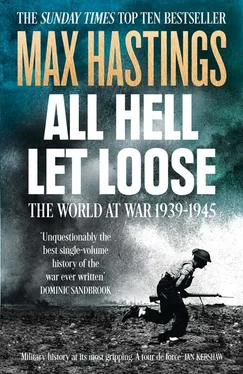
 blin when he was bewildered to see holes appearing in his plane’s wings. Landing hastily, he was met by a fellow officer who ran across the field towards him, exclaiming, ‘You’re alive, Witold? You’re not hit?’ Urbanowitz demanded, ‘What the hell’s going on?’ His comrade said, ‘You should go to church and light a candle. You were just attacked by a Messerschmitt!’ The nakedness of Poland’s defences was everywhere apparent. Fighter pilot Franciszek Kornicki was scrambled twice on 1 and 2 September. On the first occasion he pursued a German plane which easily outpaced him. On the second, when his guns jammed he tried to clear them, roll and renew his attack. As the plane banked steeply, the harness buckles holding him in his open cockpit came undone; he fell into the sky, and found himself making an embarrassed parachute descent.
blin when he was bewildered to see holes appearing in his plane’s wings. Landing hastily, he was met by a fellow officer who ran across the field towards him, exclaiming, ‘You’re alive, Witold? You’re not hit?’ Urbanowitz demanded, ‘What the hell’s going on?’ His comrade said, ‘You should go to church and light a candle. You were just attacked by a Messerschmitt!’ The nakedness of Poland’s defences was everywhere apparent. Fighter pilot Franciszek Kornicki was scrambled twice on 1 and 2 September. On the first occasion he pursued a German plane which easily outpaced him. On the second, when his guns jammed he tried to clear them, roll and renew his attack. As the plane banked steeply, the harness buckles holding him in his open cockpit came undone; he fell into the sky, and found himself making an embarrassed parachute descent.